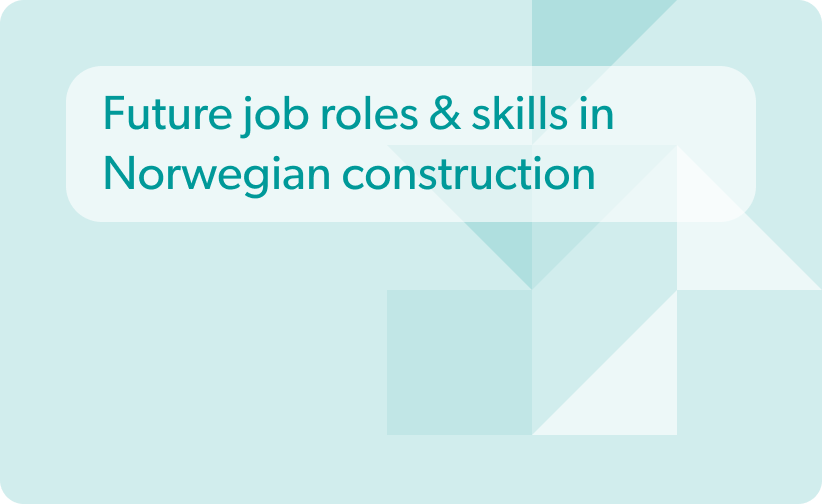Exploring internal mobility blockers and strategies for success
What is internal mobility?
“Internal mobility is the movement of employees (vertically and laterally) to new career and development opportunities within the same organization. This includes promotions, demotions, new positions, mentorships, cross-team or additional projects, job shadowing, and job swaps.” — AIHR
Consider your workplace a bustling bus, with each department and role a distinct seat. Just as a bus takes you to different destinations, your company offers various opportunities — each seat represents a unique facet of the organization. Employees start their journey in specific seats, maybe in sales, marketing, or customer service. They become comfortable and learning, but as the scenery changes, they begin to wonder about the unexplored seats and what they have to offer.
Internal mobility allows employees to shift seats within the same company bus. For instance, an employee in the marketing department might be intrigued by data analysis. Instead of disembarking and seeking an entirely new bus (a job at a different company), they can switch to the analytics seat within the organization.
This transition doesn’t mean employees leave behind their journey — they’re merely altering their vantage point. It’s like moving from a window seat to an aisle seat on the same bus. They’re exposed to fresh insights, new challenges, and different teammates, all while remaining within the familiar environment of the company.
As employees settle into their new seats, they experience the benefits of internal mobility. They’re exposed to many learning opportunities, like the changing landscapes outside the bus window. They acquire skills that complement their existing expertise, expanding their toolkit and enriching their professional profile.
Moreover, their journey through different seats offers a holistic understanding of the company’s operations. Just as a traveler gains a deeper appreciation of the route by experiencing its diverse stops, employees’ diversified experiences within the company enhance their ability to contribute effectively and make informed decisions.
Internal mobility blockers: Overcoming obstacles to skill exploration
While the concept of internal mobility offers a tantalizing array of benefits, the journey from one seat to another on the company bus is not always without its challenges. As employees contemplate the desire to learn new skills in different departments, several internal mobility blockers might stand in their way. Let’s take a closer look at these potential obstacles and explore ways to overcome them:
Lack of awareness
One of the primary blockers to internal mobility is a lack of awareness. Employees might not be fully informed about the various opportunities available within the company. This lack of knowledge can discourage them from considering skill exploration in other departments.
Solution: Employers can address this issue by implementing transparent communication about internal job postings, cross-functional projects, and skill development initiatives. Regular updates and clear information channels can empower employees to make informed choices about their career paths.
Departmental silos
Organizational silos can restrict the flow of information and collaboration between departments. This lack of cross-functional exposure may prevent employees from exploring new skills and roles beyond their immediate team.
Solution: Companies should focus on breaking down silos through initiatives that encourage cross-departmental collaboration. Embracing a culture of exploration through cross-functional projects, rotation programs, and mentorship initiatives break down the barriers of stagnation, empowering employees to embark on transformative journeys of skill exploration and professional advancement.
Skill mismatch
Employees might feel that their current skill set doesn’t align with the requirements of other departments. This perceived lack of relevant skills can deter them from pursuing internal mobility.
Solution: Organizations can navigate this challenge by implementing tailored upskilling initiatives that bridge the gap between an employee’s existing skill set and the demands of their desired department. Through strategic investments in focused skills gap identification and professional development plans, companies equip their workforce with the essential capabilities needed for a smooth transition into new roles, ensuring a seamless and successful journey of career evolution.
How can organizations empower themselves to learn from past mistakes, avoid pitfalls, and proactively address skills gaps?
The answer lies in our comprehensive “Skills Matrix Guide for HR Leaders,” which delves into the importance of these practices and their pivotal role in organizational growth and success.
Limited growth opportunities
Employees’ perceptions play a crucial role in shaping their career decisions. A sense of stagnation takes root when they believe that certain departments offer limited room for growth and advancement. This perceived lack of upward mobility can be a strong deterrent, discouraging them from venturing into these areas.
Solution: Organizations should champion internal mobility as the catalyst for change to counter the perceived dearth of growth possibilities in select departments. By promoting transparent communication about diverse career pathways, highlighting success stories, and implementing structured skill development programs, companies can showcase the boundless opportunities for growth within each corner of the organization.
Managerial approval
Employees often require managerial approval to switch seats on the company bus. If managers are reluctant to let go of skilled team members, it could hinder internal mobility.
Solution: Leveraging people analytics, organizations can surmount managerial approval obstacles. Data-driven insights showcase internal mobility’s benefits, demonstrating how supporting career exploration enriches skills and adaptability. Aligning managerial perspectives with data-backed evidence fosters a mobility-championing culture, empowering skilled team members to embark on transformative journeys while ensuring company agility.
In overcoming these internal mobility blockers, companies empower their employees to embark on skill-exploration journeys across different seats of the company bus. By fostering a culture of learning, transparency, and collaboration, organizations can create an environment where employees can develop a rich and diverse skill set, contributing not only to their own growth but also to the company’s success. Just as a bus moves forward with its passengers’ collective energy, so does a company thrive when its employees are empowered to navigate their professional paths with purpose and flexibility.
The hidden costs of poor internal mobility: A call to action for HR leaders
As an HR leader, you might ponder the need to invest in internal mobility when your employees appear to be performing well in their current roles. It’s a valid question — why shake things up if everyone seems content and productive? However, beneath the surface of apparent harmony, the lack of robust internal mobility can impose significant costs on an organization, both tangible and intangible. Let’s delve into some eye-opening statistics that shed light on the consequences of poor internal mobility and why investing in this transformative practice is imperative.
Higher employee turnover rates
Between April 2021 and April 2022, the primary driver for employee departures was the absence of career development and progression opportunities, accounting for 41% of the cases.
Source: Zavvy
Diminished employee engagement
Recent statistics underscore the significance of internal mobility in modern workplaces. In 2022, a survey conducted by software company Lever revealed that 61% of employees would actively seek new job opportunities if their current company didn’t offer the flexibility for role changes. What’s more, Deloitte’s findings indicate that introducing an internal mobility program resulted in a remarkable increase of nearly 30% in employee engagement for a specific organization.
Reduced productivity and innovation
LinkedIn data reveals that employees transitioning to new internal roles demonstrate a remarkable 3.5 times higher likelihood of being productive compared to their counterparts who remain in their current positions.
High recruitment costs
An analysis conducted by Gartner has unveiled a striking revelation: the financial toll of inadequate internal mobility and limited future career prospects amounts to a staggering $49 million per year for an average-sized organization.
Internal hiring leads to a notable 20% reduction in hiring expenses. This significance is magnified in 2023, as 53% of internal recruitment professionals anticipate their recruitment budgets remaining stagnant or even diminishing this year.
Impact on employee morale
LinkedIn’s 2023 Workplace Learning Report highlighted a concerning trend in employee experiences where respondents expressed a lack of sufficient encouragement for internal mobility, with a mere 15% indicating their organization promoted transitioning to new roles. Additionally, only 14% felt their organization motivated them to craft new career development plans, while merely 26% stated their organization provided challenges to acquire new skills.
The numbers don’t lie — poor internal mobility can exact a significant toll on an organization’s bottom line, its culture, and its ability to attract and retain top talent. While employees might seem content in their current seats, the absence of avenues for skill exploration and career advancement can lead to a host of detrimental outcomes.
As an HR leader, the responsibility falls upon you to champion the cause of internal mobility, invest in the growth and development of your workforce, and steer the company toward a future of enhanced engagement, innovation, and prosperity.
In the grand journey of your organization, internal mobility isn’t just a detour; it’s an essential route to success. By addressing the hidden costs of poor internal mobility, you’re not just investing in your employees — you’re investing in your company’s future vitality and resilience.
Unlock your organization’s potential: Embrace internal mobility with HRForecast
With HRForecast’s expertise, you can seamlessly navigate the journey of internal mobility, turning your organization into an internal talent marketplace. Imagine accelerating your hiring process, boosting employee engagement, and facilitating talent mobility — all within the confines of your own company. With HRForecast’s expertise, you can seamlessly navigate the journey of internal mobility, turning your organization into an internal talent marketplace.
Accelerate your hiring speed: Hiring external talents might seem complex and time-consuming. However, tapping into your internal talent pool can expedite the process while gaining invaluable insights into candidates’ skills, locations, and more. Let us guide you in leveraging your existing resources for enhanced hiring efficiency.
Facilitate talent mobility: Talent mobility is key to fostering employee growth and organizational adaptability. Our comprehensive approach provides you with a comprehensive overview of available skills and competencies within your company. Everyone, from HR professionals to employees, gains access to this data, enabling strategic career transitions.
Accelerate career journeys: Seamlessly importing job offers and skill-based matching — that’s the HRForecast advantage. With our solutions, you’ll empower your employees to explore new roles, find their best-fit opportunities, and apply for positions that resonate with their aspirations.
Build the future: The future demands a workforce aligned with evolving industry trends. With HRForecast, you can detect and understand the future skills relevant to your industry, creating personalized employee development recommendations. Our smartPeople library houses over 1,000 future skills, job profiles, training resources, and regular updates.
The path to thriving internal mobility and a skilled, adaptable workforce is within reach. Take the first step by booking a demo with us, and let our consultants guide you toward a future of enhanced talent mobility, engaged employees, and sustained growth.
Stay up to date with our newsletter
Every month, we’ll send you a curated newsletter with our updates and the latest industry news.




























 info@hrforecast.de
info@hrforecast.de
 +49 89 215384810
+49 89 215384810






